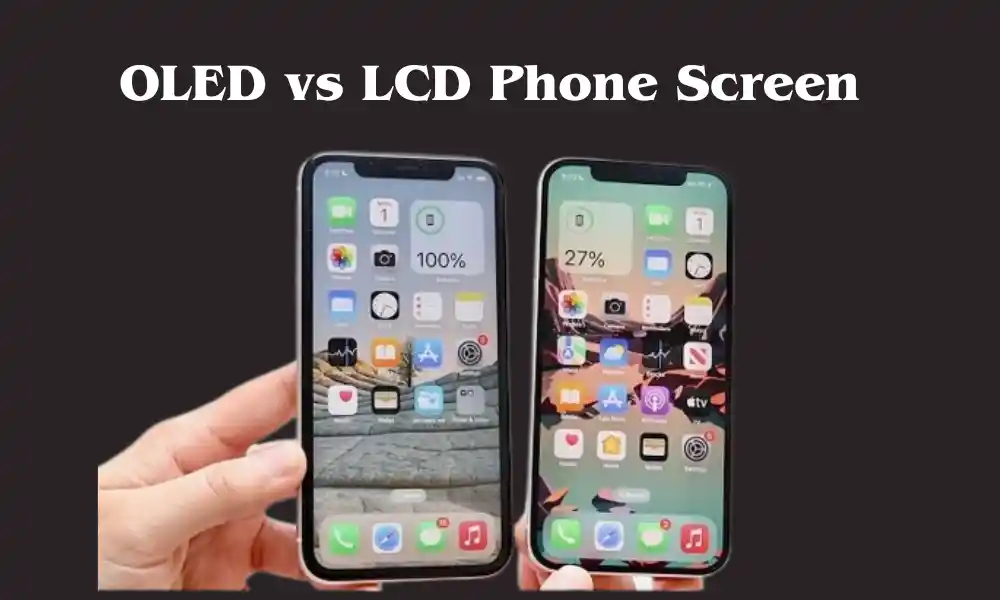With the fast advancement in cellphone generation, screen exceptional has become a top priority for customers. Whether you’re looking a movie, gambling video games, or surfing social media, the display’s overall performance greatly impacts your revel in. The important show technology, OLED and LCD, frequently spark debates over which one affords a higher user enjoy. In this article, we’ll explore the key variations between OLED vs LCD phone screen, assisting you make an informed decision about that is right for you. Before your studying extra are your looking for Phone specialist to guide you about mobile phone?
What is an OLED Screen?
OLED stands for Organic Light Emitting Diode. This display era makes use of natural compounds that emit light whilst an electric present day is surpassed thru them. Unlike traditional screens, OLED panels don’t want a backlight to light up the display. This enables OLEDs to display deeper blacks and provide better shade assessment.
How OLED Screens Work
OLED displays include man or woman pixels which can light up independently. Each pixel is made of subpixels that emit pink, green, and blue light. This self-illuminating characteristic lets in OLED monitors to show off character pixels, ensuing in ideal blacks and excessive evaluation ratios.
Advantages of OLED Screens
- True black levels due to the ability to turn off pixels
- Higher contrast ratios compared to LCD
- Thinner and lighter design as there’s no need for a backlight
- Better viewing angles, making images clearer from different perspectives
What is an LCD Screen?
LCD, or Liquid Crystal Display, is a display screen technology that has been widely utilized in various devices, from TVs to smartphones. LCD monitors paintings by way of using liquid crystals to manipulate mild that passes thru them. These displays require a backlight to feature, commonly provided with the aid of LED lighting.
How LCD Screens Work
An LCD display works with the aid of setting liquid crystals between layers of polarized glass. When an electric powered cutting-edge passes thru those crystals, they permit light to bypass thru in various stages to create the image. The backlight illuminates the screen from behind, which is why LCDs can’t obtain the same true blacks as OLED.
Advantages of LCD Screens
- Lower production costs than OLED, making them more affordable
- Longer lifespan, as they’re less prone to burn-in
- Better brightness in direct sunlight due to backlight uniformity
- More durable in general use compared to OLED
Key Differences Between OLED vs LCD phone screen
Display Quality
OLED monitors offer richer colours, better contrast, and real blacks, while LCD monitors provide greater constant brightness across the screen, in particular in outside settings.
Energy Efficiency
OLED screens eat less electricity when displaying darker pictures considering the fact that they can turn off character pixels. However, LCD displays, in spite of needing extra electricity typical, can be more electricity-efficient when displaying bright pics or in high-brightness settings.
Color Accuracy and Brightness
OLED displays typically have extra vibrant colorings and deeper blacks, whereas LCDs are acknowledged for his or her vibrant displays and better visibility in daylight.
Cost Differences
OLED screens have a tendency to be more high-priced because of the complexity of the technology, whilst LCDs are extra affordable, making them a popular choice in budget smartphones.
Which Screen is Better for Battery Life?
OLED displays commonly provide higher battery efficiency in darker modes or apps due to their ability to show off pixels. However, in real-lifestyles utilization, the difference can also range based totally on your screen brightness settings and utilization patterns.
Durability: OLED vs LCD
OLED Screen Durability
OLED displays are recognised to be greater fragile, particularly due to their thinner layout. They are also greater liable to harm from drops.
LCD Screen Durability
LCD screens are usually sturdier and less likely to suffer from issues like screen burn-in, making them more durable over time.
Which Screen Offers Better Viewing Experience?
OLED displays generally tend to provide better evaluation and viewing angles, making them best for media consumption and gaming. LCD screens, then again, carry out higher in vivid sunlight and are typically much less stricken by glare.
Impact of OLED and LCD on Eye Strain
Blue Light Emission Comparison
Both OLED and LCD screens emit blue mild, but OLED monitors are recognized to emit barely less, that could lessen eye pressure for extended use. However, using functions like Night Mode or Blue Light Filters on either sort of screen can assist mitigate this problem.
Gaming Experience: OLED vs LCD phone screen
OLED screens offer better response times and deeper shades, enhancing the general gaming revel in. However, a few gamers pick the brightness and durability of LCD screens, specifically for instant-paced action.
Longevity and Screen Burn-In Issues
OLED Burn-In Risk
OLED screens are prone to burn-in, which takes place when static photographs are displayed for too long. This consequences in a ghost picture being permanently visible. While more moderen OLED monitors have progressed, the threat nevertheless exists.
LCD Longevity
LCD screens are generally more resistant to burn-in, making them a longer-lasting choice for those who use their phones heavily.
OLED and LCD in Budget vs Premium Phones
Premium smartphones just like the iPhone thirteen Pro and Samsung Galaxy S22 Ultra use OLED monitors to supply advanced fine. On the alternative hand, finances telephones just like the Moto G series usually use LCD monitors to maintain fees down even as supplying first rate performance.
Are OLED Screens More Fragile?
OLED screens are more prone to cracks and damage due to their thinner, more flexible structure. To protect them, consider using a good screen protector and phone case.
Environmental Impact of OLED vs LCD
Both OLED and LCD monitors have their environmental considerations. OLEDs use less energy when displaying darker pictures, even as LCDs generally tend to eat greater power however may be less complicated to recycle due to their less complicated components.
OLED vs AMOLED
Structure and Design Differences
The primary difference among OLED and AMOLED lies of their manipulate mechanism. While OLED has a simpler layout, AMOLED contains an active matrix layer that makes it extra responsive and green.
Brightness Comparison
AMOLED commonly wins inside the brightness class. Its lively matrix generation allows for higher brightness manipulate, making it greater appropriate for use in brightly lit environments.
Power Consumption
OLED shows have a tendency to consume less strength when displaying dark content due to the unbiased pixel lighting. However, AMOLED’s lively matrix may be more green in displaying brighter content.
Image Quality: Which Offers Better Visuals?
Color Accuracy
Both OLED and AMOLED provide extraordinary colour accuracy, but AMOLED is thought for generating extra saturated colorations, that could every so often look much less natural.
Contrast and Black Levels
Both technology excel in delivering deep blacks and fantastic evaluation, but OLED would possibly have the brink due to its simpler pixel manage.
Conclusion
Both OLED and LCD screens have their strengths and weaknesses. OLED displays provide higher evaluation, genuine blacks, and thinner designs, making them ideal for media intake and gaming. LCD displays, then again, are extra low cost, durable, and perform better in bright daylight. Your preference in the long run depends for your wishes, budget, and priorities on the subject of display screen performance.
Frequently Asked Questions (FAQs)
What are the main differences in color quality between OLED and LCD?
OLED presentations provide richer, more colourful shades with proper blacks, even as LCDs have a tendency to have extra regular brightness and carry out better underneath sunlight.
Which screen type is better for outdoor use?
LCD screens are generally better for outdoor use because of their consistent brightness across the screen.
How can I tell if a phone screen is OLED or LCD?
You can usually tell by looking at the contrast levels. OLED displays will show deeper blacks, while LCD screens may look slightly washed out in dark areas.




